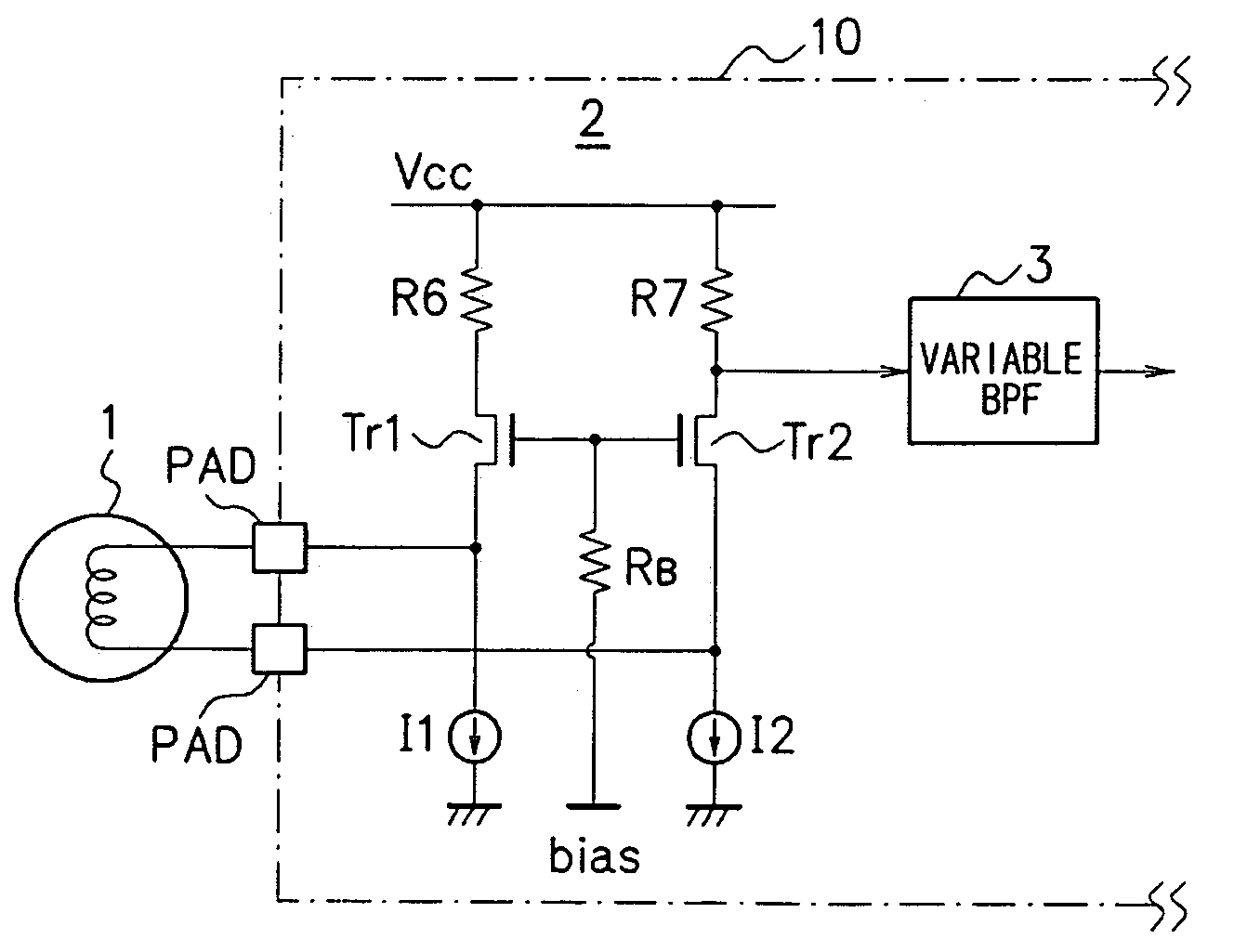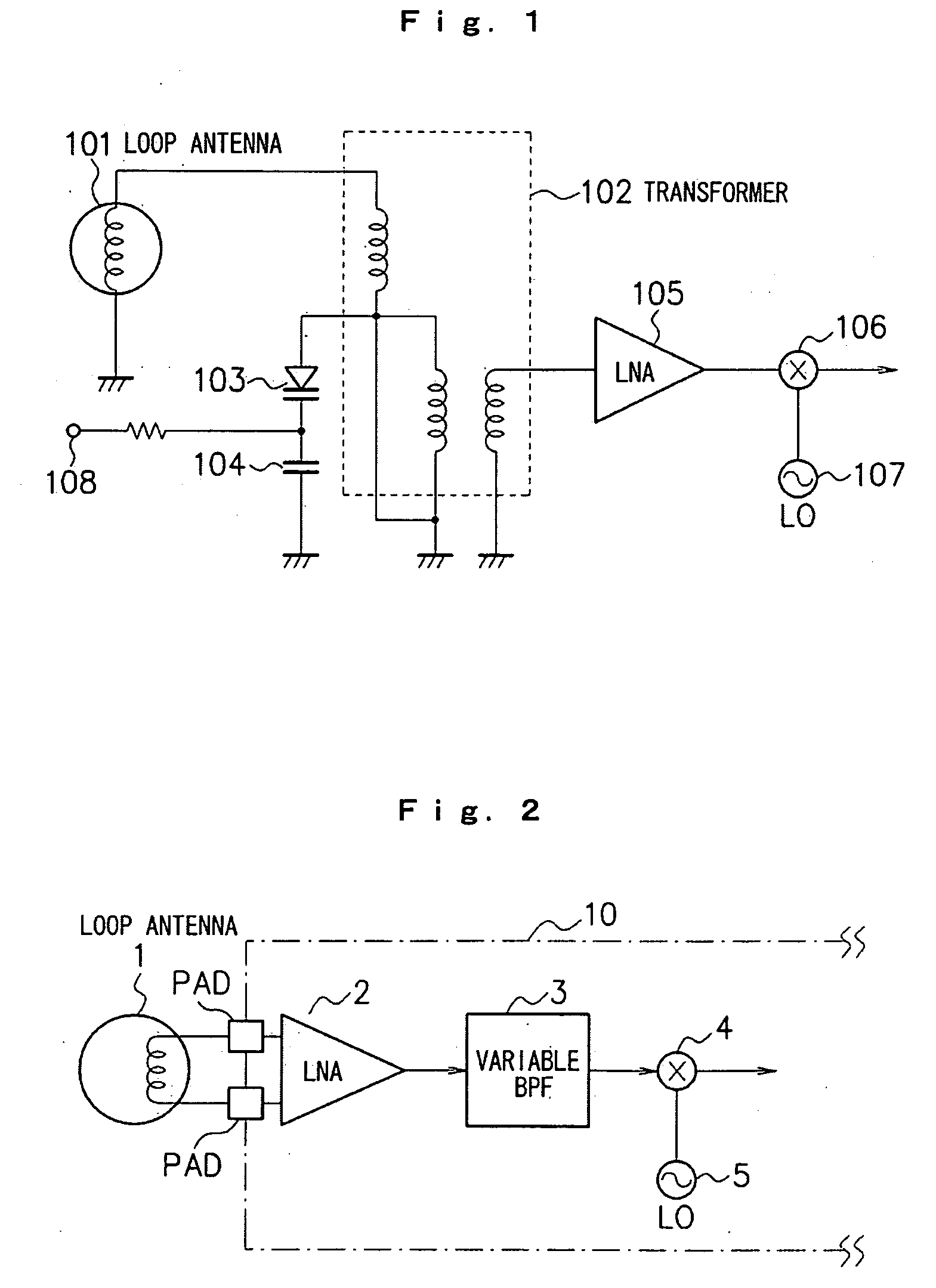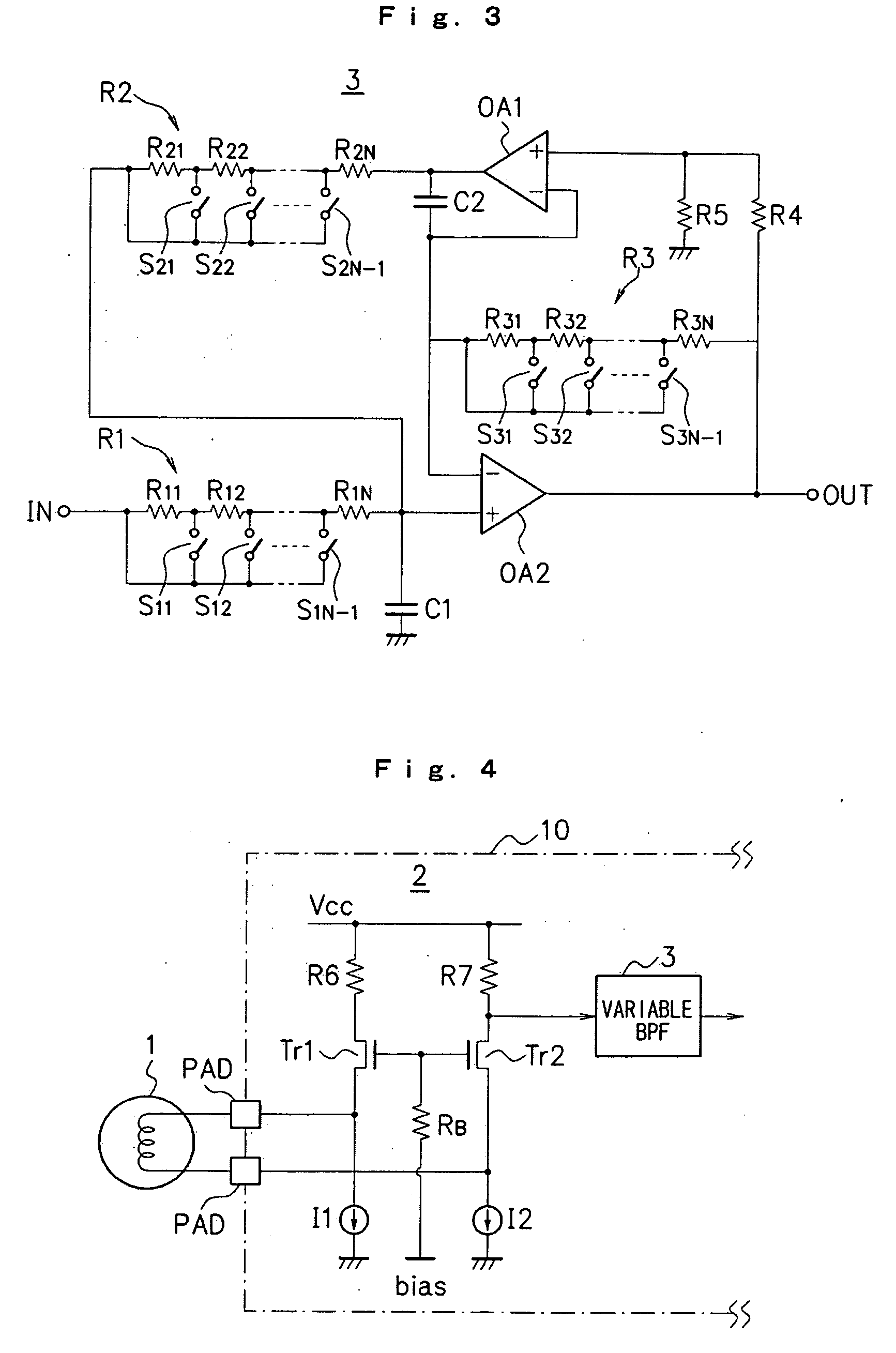Broadcast Signal Receiving Apparatus
a technology for receiving apparatuses and broadcast signals, applied in electrical apparatus, continuous tuning, resonance circuit tuning, etc., can solve problems such as difficult impedance matching and easy interference, and achieve excellent selectivity of target frequencies and easy impedance matching
- Summary
- Abstract
- Description
- Claims
- Application Information
AI Technical Summary
Benefits of technology
Problems solved by technology
Method used
Image
Examples
Embodiment Construction
[0021]Embodiments of the present invention will be described below with reference to the drawings. FIG. 1 is a view illustrating an exemplary configuration of the main part of a broadcast signal receiving apparatus according to the present embodiment. As described in FIG. 1, the broadcast signal receiving apparatus according to the present embodiment includes a loop antenna 1, LNA (low noise amplifier) 2 directly connected to the loop antenna 1, variable BPF 3, mixer 4 and local oscillator 5. Of these components, the LNA 2, variable BPF 3, mixer 4 and local oscillator 5 are integrated in a single IC chip 10 by means of a process such as CMOS (Complementary Metal Oxide Semiconductor) or Bi-CMOS (Bipolar-CMOS).
[0022]The variable BPF 3 is connected in a stage following the LNA 2, and the passed frequency band thereof is adapted to be variable. According to the present embodiment, the variable BPF 3 is an active filter for which the passed frequency band can be controlled by a resistanc...
PUM
 Login to View More
Login to View More Abstract
Description
Claims
Application Information
 Login to View More
Login to View More - R&D
- Intellectual Property
- Life Sciences
- Materials
- Tech Scout
- Unparalleled Data Quality
- Higher Quality Content
- 60% Fewer Hallucinations
Browse by: Latest US Patents, China's latest patents, Technical Efficacy Thesaurus, Application Domain, Technology Topic, Popular Technical Reports.
© 2025 PatSnap. All rights reserved.Legal|Privacy policy|Modern Slavery Act Transparency Statement|Sitemap|About US| Contact US: help@patsnap.com



